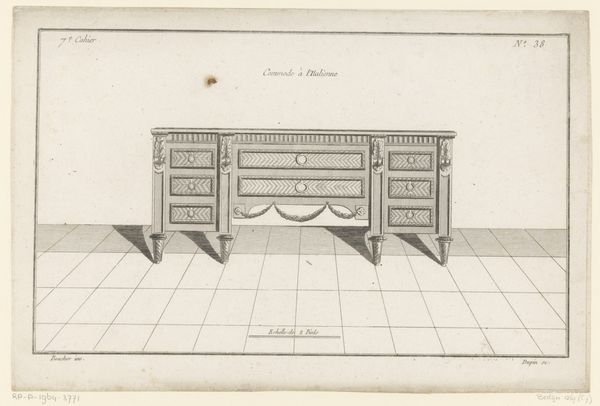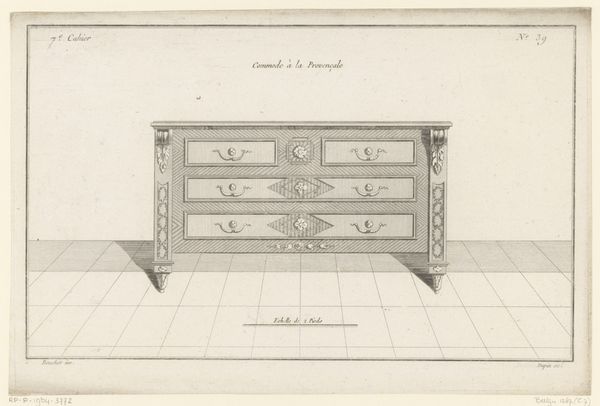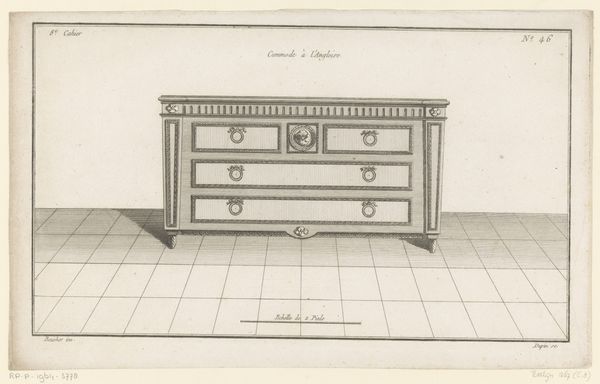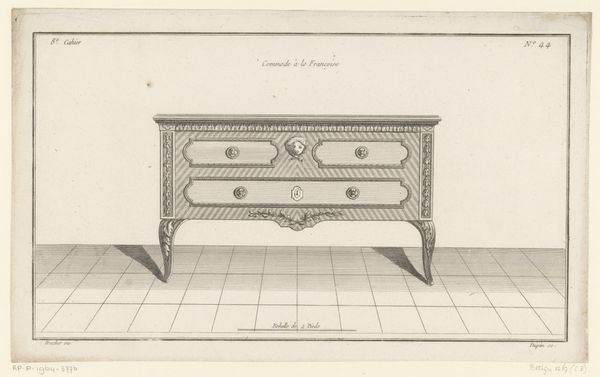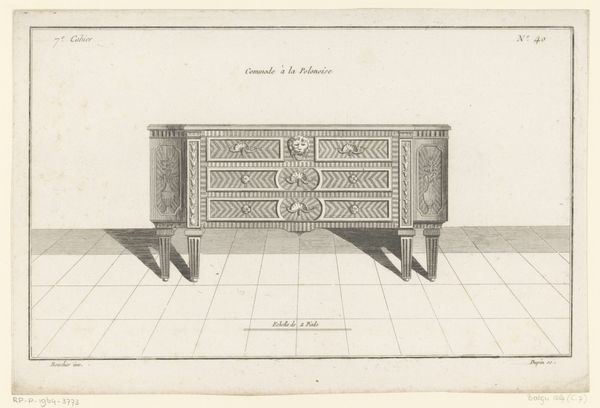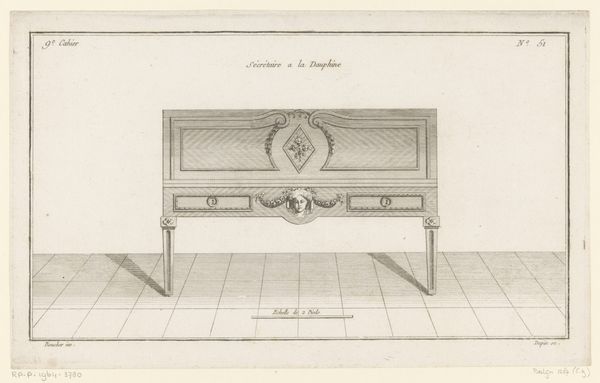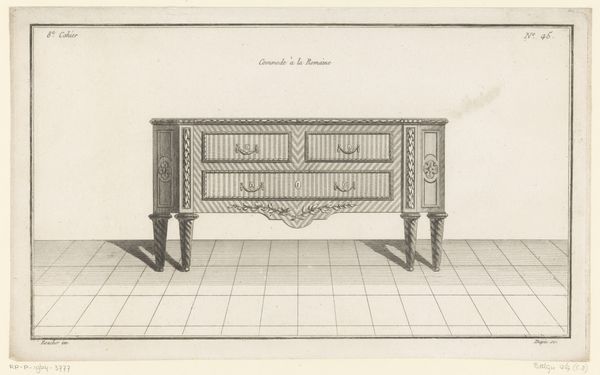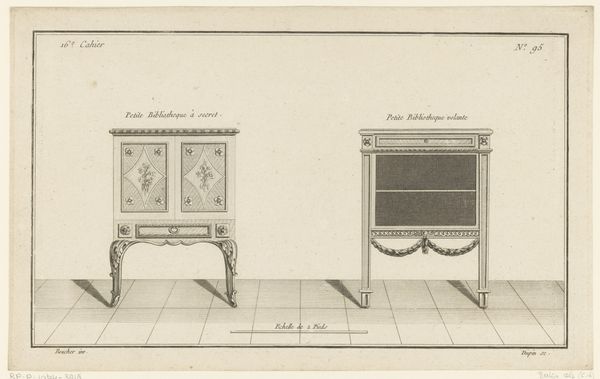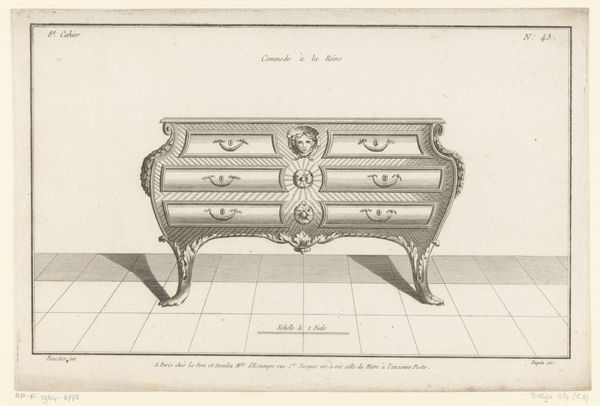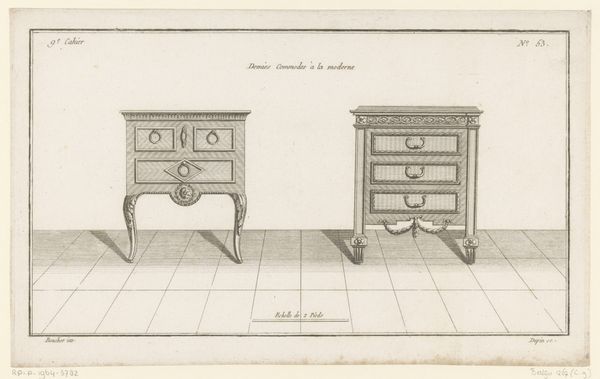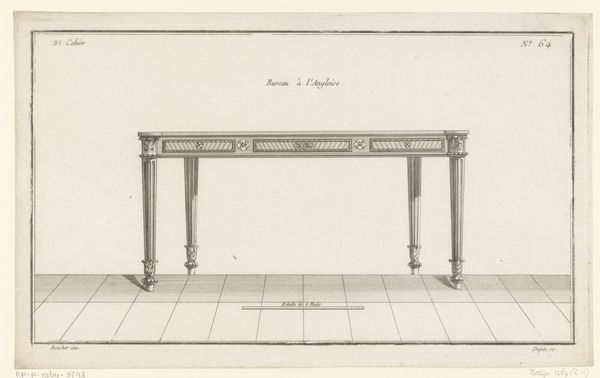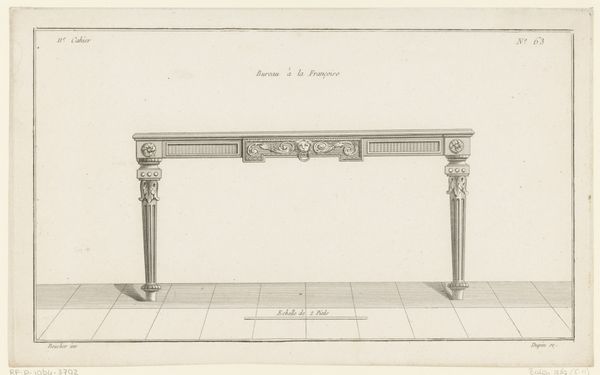
drawing, print, etching, paper, pen, engraving
#
drawing
#
neoclacissism
# print
#
etching
#
paper
#
form
#
geometric
#
line
#
pen
#
academic-art
#
decorative-art
#
engraving
#
realism
Dimensions: height 212 mm, width 320 mm
Copyright: Rijks Museum: Open Domain
This is Nicolas Dupin’s 18th-century drawing of a commode, a design for a chest of drawers. The commode is adorned with ornate carvings and symmetrical patterns, reflecting the period’s taste for elegance and order. Notice the recurring motif of the acanthus leaf, used prominently as a decorative element along the top and base of the commode. This symbol, borrowed from ancient Greek and Roman art, represents enduring life and immortality, which were often used in architectural ornamentation to evoke a sense of classical grandeur. Consider how this motif has journeyed through time, from the temples of antiquity to the furniture of the French aristocracy. Its persistence speaks to a deep-seated human desire to connect with the past. The acanthus leaf, though modified and stylized, carries with it echoes of its original significance, subtly influencing our perception of beauty and value. Such symbols remind us that art is not created in isolation but emerges from a collective memory, shaped by history, emotion, and the relentless march of time.
Comments
No comments
Be the first to comment and join the conversation on the ultimate creative platform.
